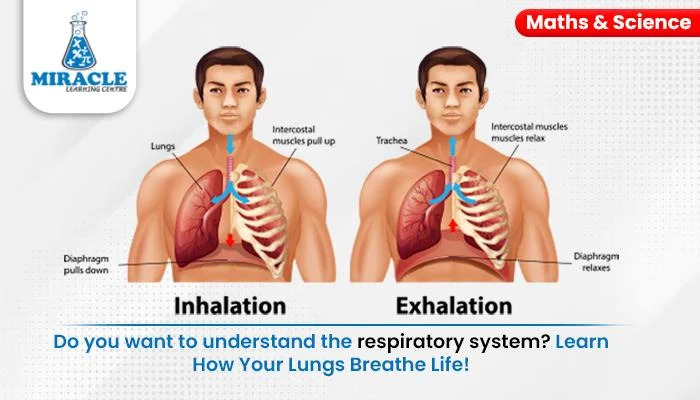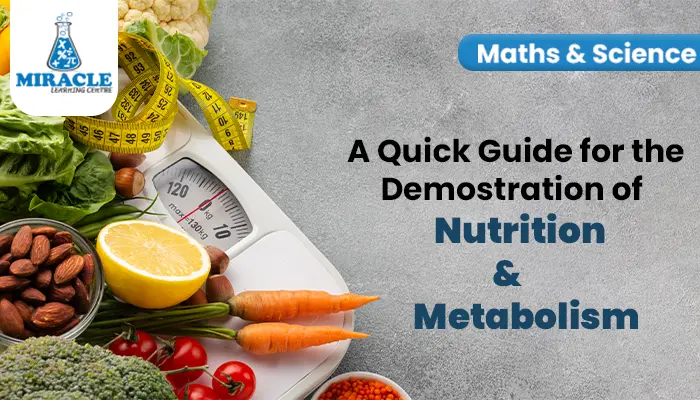Have you ever wondered how you effortlessly inhale and exhale air without giving it a second thought? The answer lies within the complex and awe-inspiring system known as the lungs and respiratory system. At our science tuition centre in Singapore, we provide students with comprehensive instruction on how does the respiratory system work and strategies for maintaining healthy lungs. This knowledge not only aids them in achieving academic excellence but also equips them with valuable insights applicable to their everyday lives.
In this blog, we'll take a deep dive into the science behind our breath, exploring the anatomy and physiology that keeps us alive and well.
What is the Respiratory System?
The respiratory system is an elaborate network of organs and tissues that work together to facilitate the exchange of gases - primarily oxygen (O2) and carbon dioxide (CO2) - between the body and the environment. Its primary functions are to provide oxygen to the bloodstream and remove carbon dioxide, a waste product of metabolism, from the body. Click here to learn more about respiratory systems.
What is Respiratory Rate?
Respiratory rate, or breathing rate, measures how many breaths a person takes per minute. It's a vital sign used to assess overall health. The normal respiratory rate for adults at rest typically ranges from 12 to 20 breaths per minute. However, it can vary depending on factors such as age, activity level, and overall health. Infants and children tend to have higher respiratory rates than adults. Changes in respiratory rate can indicate medical conditions. When someone breathes faster than usual, it could mean they have a fever or an infection. On the other hand, if they're breathing slower than normal, it might be because of a drug overdose or problems with their nerves and brain. Monitoring respiratory rate is crucial in healthcare to assess a patient's respiratory status and determine if intervention is needed.
A Closer Look on the Anatomy of the Respiratory System:
- Lungs - The Main Actors
The lungs are the stars of the respiratory system. Enclosed within the chest cavity, these spongy, cone-shaped organs play a pivotal role in the process of breathing. The right lung is divided into three lobes, while the left lung has two, allowing them to fit snugly against the heart.
- Airways and the Journey of Air
Breathing begins with the inhalation of air through the nose or mouth. The air then travels down the trachea, or windpipe, which branches into smaller tubes called bronchi. The bronchi further divide into bronchioles, which resemble a tree's branches, until they reach tiny air sacs called alveoli.
- Gas Exchange in the Alveoli
Once air reaches the alveoli, the magic happens. These tiny sacs are surrounded by an intricate network of blood vessels called capillaries. Oxygen from the inhaled air diffuses across the thin walls of the alveoli into the bloodstream, binding to hemoglobin in red blood cells. Simultaneously, carbon dioxide, a waste product of metabolism, is released from the bloodstream into the alveoli to be exhaled.
- Diaphragm - The Breathing Muscle
Now, let's talk about the diaphragm, an often-overlooked hero in the respiratory process. The diaphragm is a thin, dome-shaped muscle located just below the lungs. When you inhale, this muscle contracts, flattening out and increasing the volume of the chest cavity. This expansion lowers the air pressure in the lungs, causing air to rush in and fill the space.
Exhalation is a passive process, primarily driven by the relaxation of the diaphragm. As it relaxes, the chest cavity's volume decreases, and the higher air pressure within the lungs pushes air out.
The Role of the Brain
Your brain plays a pivotal role in regulating your breathing. The brainstem, particularly the medulla oblongata, constantly monitors the levels of oxygen and carbon dioxide in your blood. When these levels deviate from their optimal range, the brain sends signals to adjust your breathing rate and depth to maintain equilibrium.
Tips for Maintaining Lung Health in Kids and Adults:
- Avoid smoking and exposure to secondhand smoke.
- Aim for 30 minutes of moderate exercise most days.
- Drink enough water to keep mucous membranes moist.
- Include fruits, vegetables, whole grains, and omega-3-rich foods.
- Learn deep breathing and other techniques to improve lung capacity.
Conclusion
The lungs and respiratory system are exquisite biological marvels, orchestrating the essential process of respiration that keeps us alive. Understanding their inner workings is not only an essential part of your science education but also an opportunity to appreciate the intricacies of the human body. In our science tuition centre in Singapore, we are committed to nurture student’s scientific curiosity and help them excel in their studies.
If you have any questions or need further clarification on this or any other topic, don't hesitate to reach out to our dedicated team of educators at Miracle Learning Centre. We're here to support your learning journey and help you achieve academic excellence in the fascinating world of science. Happy learning!








